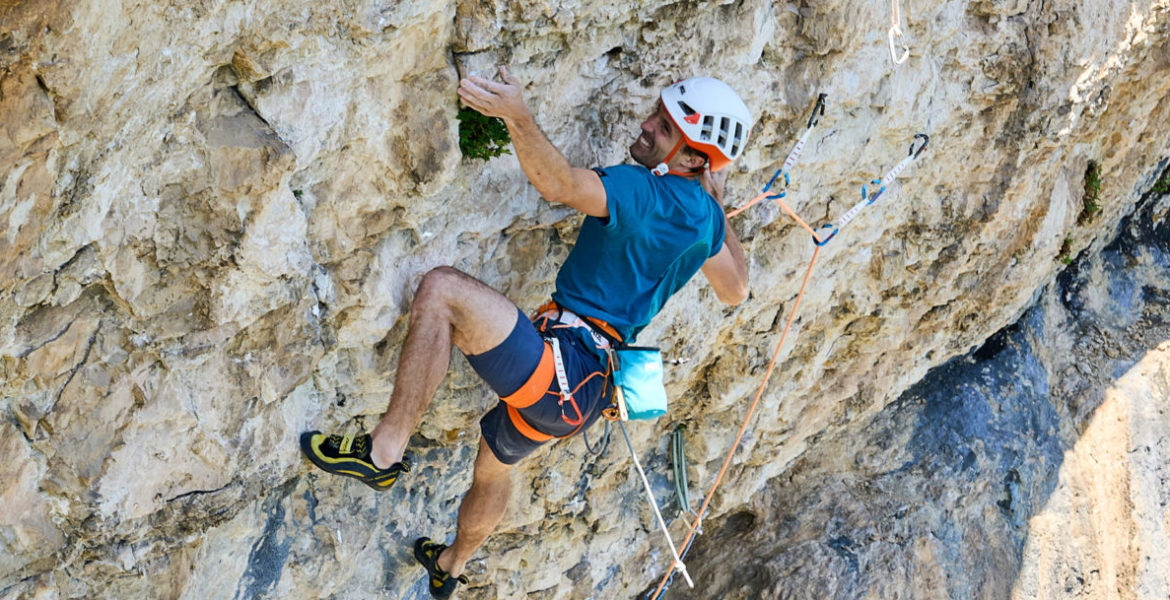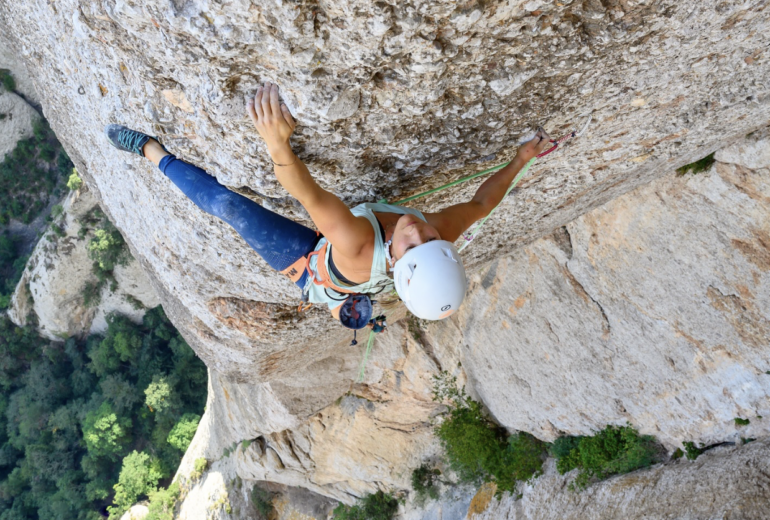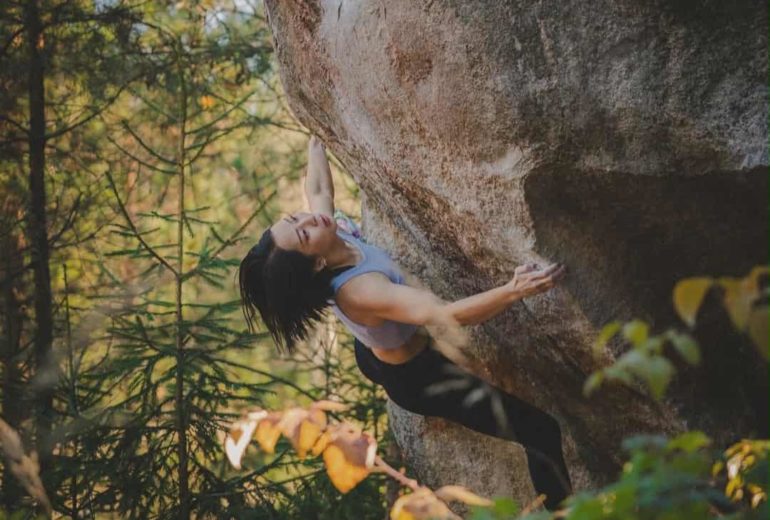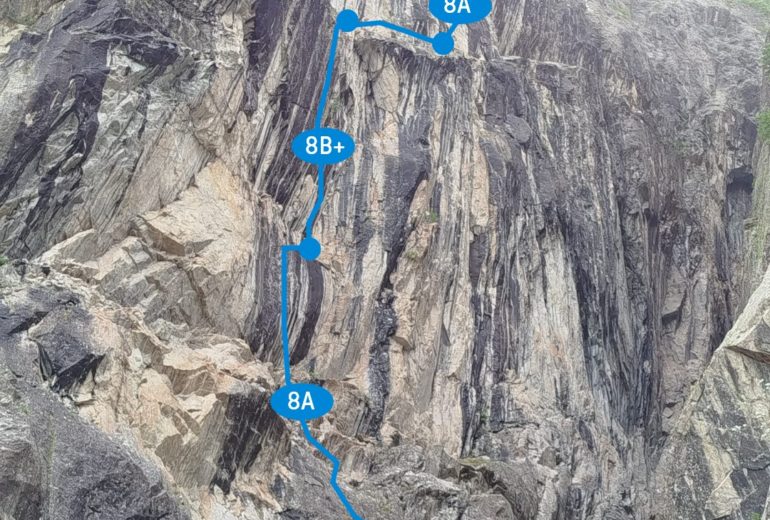Léo Billon, guide de haute-montagne et alpiniste émérite membre du prestigieux GMHM, aime autant se coller à des courses relevées dans le massif du Mont-Blanc que réaliser des grandes-voies extrêmes en toute discrétion, à voir sa liste assez impressionnante dans le domaine avec « Freerider » à El Cap, « Yeah man » aux Gastlosen ou encore « Carnet d’adresse » au rocher du Midi… Accompagné de Seb Ratel, autre discret mais très expérimenté guide du Vercors, Léo s’est attelé ce début d’été à libérer la première voie qu’il avait gravi en artif quand il avait 17 ans, « Le renouvellement des mites », proposé à 8b+, une voie ouverte en 1999 par Bruno Arnaud et Marie-Claire Hourcade à Presles (A3/A4, 350m). Une initiative assez originale qui a attiré notre attention !
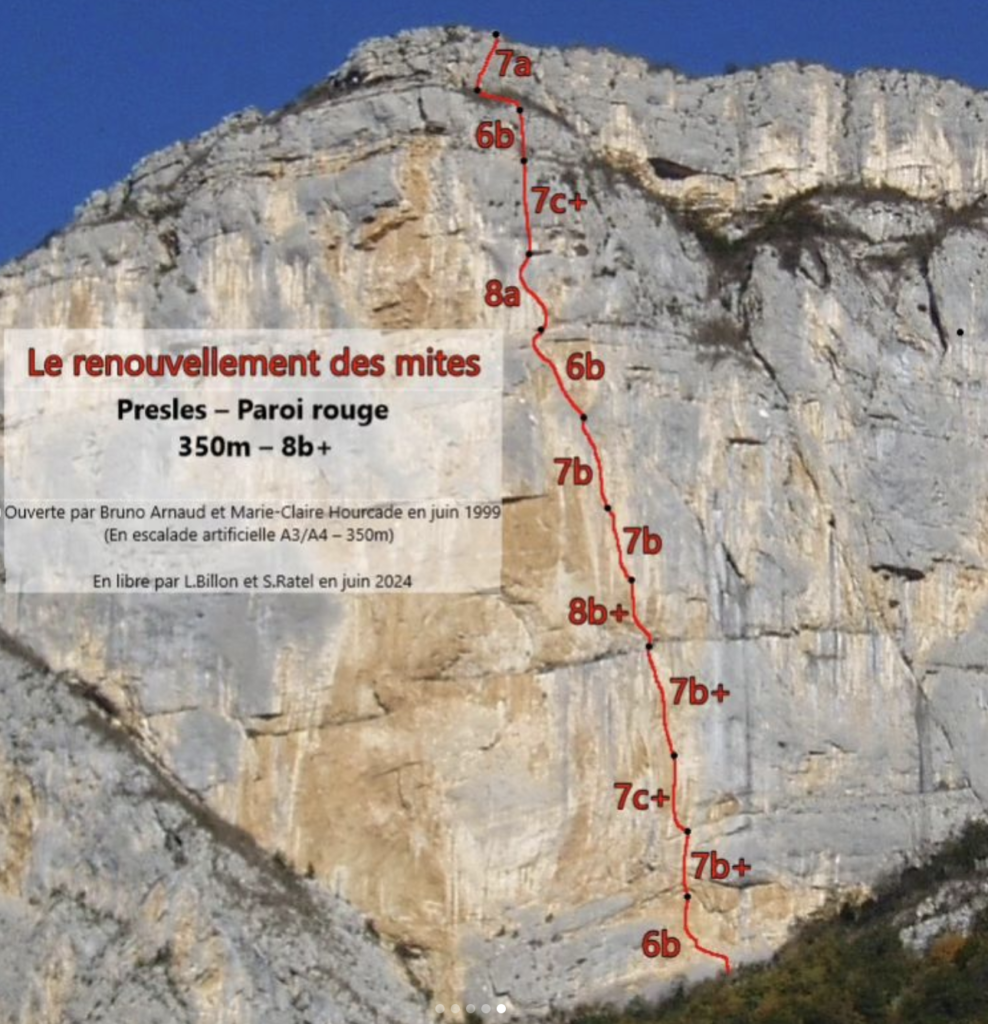
– Comment l’idée de réaliser en libre cette voie d’artif vous est venue ? Le caillou était suffisamment de bonne qualité ?
Avec Seb Ratel, on avait déjà libéré quelques grandes-voies d’artif sur la paroi de Glandasse dans le Diois, et je me rappelais de cette grande-voie d’artif qui m’avait marqué à Presles. Du coup on est allé voir : le rocher était relativement bon pour du libre, avec un peu de nettoyage à faire mais pas trop. Il a y très belles sections sur du calcaire à goutte d’eau et des parties avec des briquettes jaunes plus péteuses.
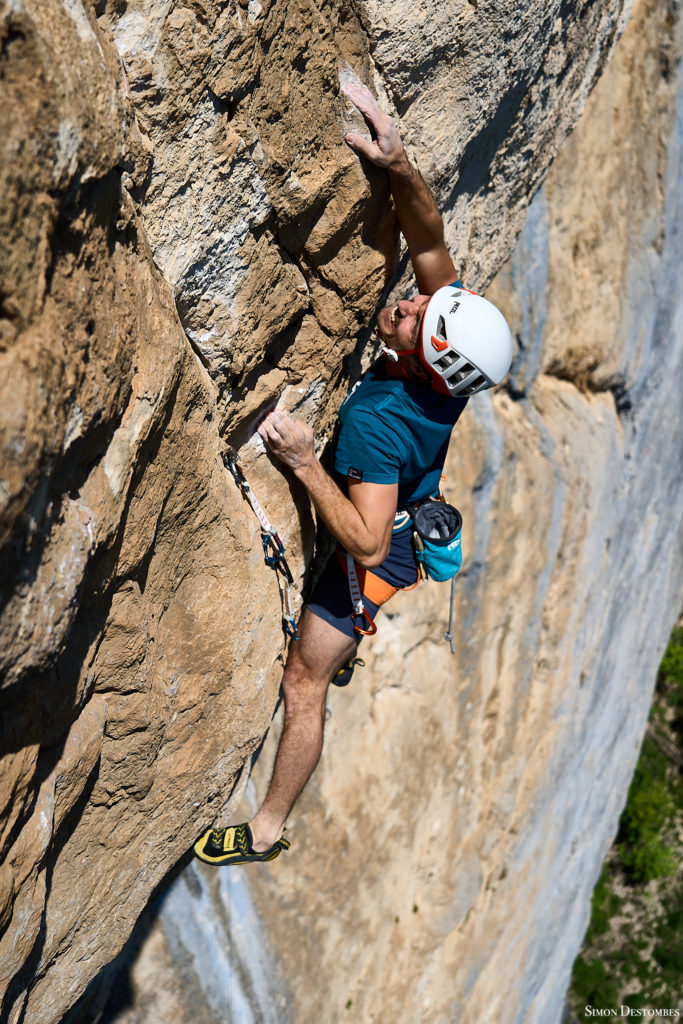
– Peux tu décrire l’itinéraire ? Les longueurs clé, les principales difficultés ?
La longueur clé est un 8b+ passe par un gros bombé. 35 mètres, 90 mouvements, 3 sections avec un pas de bloc en 7A/B, le départ est athlétique, puis c’est de la rési longue après un repos. C’est varié dans du rocher jaune/orange avec des trous, des réglettes, des bis…Une longueur cool à grimper, C’était limite pour que cela passe, à la limite de notre niveau. Au début, c’était impressionnant, et puis au final on s’est rendu compte que que c’était faisable. EN revanche la voie manque d’homogénéïté. Il y a aussi un 8a et deux 7c+ pour 12 longueurs, mais si tu enchaînes le 8b+, normalement tu fais la voie.
– Comment cela se passe au niveau des protections ? Pas trop exposé ?
Dans la L1 en 6B, faut pas tomber ! C’est expo ! La suite est assez bien protégée, avec quelques portions engagées. Dans le 8b+ c’est aéré avec des sections obligatoires où tu peux faire des gros trous dans l’air en cas de chute ! A la sortie de la longueur, on sort sur 2 bird beaks, c’est pas très solide comme protection ! (photo ci-dessous)
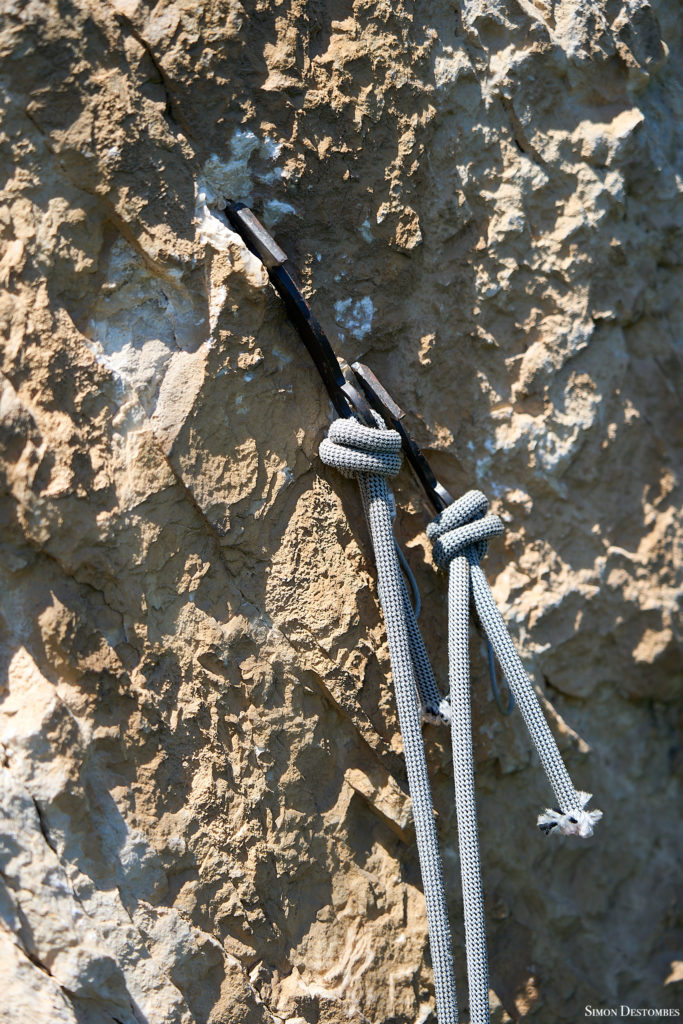
– Comment s’est passé le travail ?
Comme pour les autres voies d’artif qu’on avait libéré, on y est allé une première fois en artif. On brosse un peu, on aménage la longueur, on place les protections, on laisse le matériel en place. Après 2 jours chacun à nettoyer les longueurs, on a essayé les mouvements en grimpant sur une corde statique. J’y suis retourné encore une fois, et ensuite cela a été l’enchainement.
– Quelle est votre motivation à libérer des itinéraires en artif en libre, où le caillou n’est pas de la meilleure qualité ?
J’aime tenter l’ascension des grandes voies, en raison de la répétition des difficultés. Il y a une gestion constante, peu de place pour l’erreur (surtout quand on est à la limite de son niveau !), et l’on se doit de bien grimper. On ne peut pas se permettre de grimper en sécurité ou de manière contrôlée. J’aime cette sensation d’être à la limite, où tout doit s’aligner pour permettre l’ascension en libre. Il faut bien grimper sur chaque longueur, c’est l’exigence et le défi que j’aime retrouver en grande voie. Continuer à grimper presque à son niveau maximal, avec la fatigue de la journée qui s’accumule, tout en gardant la bonne intention, le bon état d’esprit, et en gérant la pression, c’est ce qui rend cette pratique stimulante.
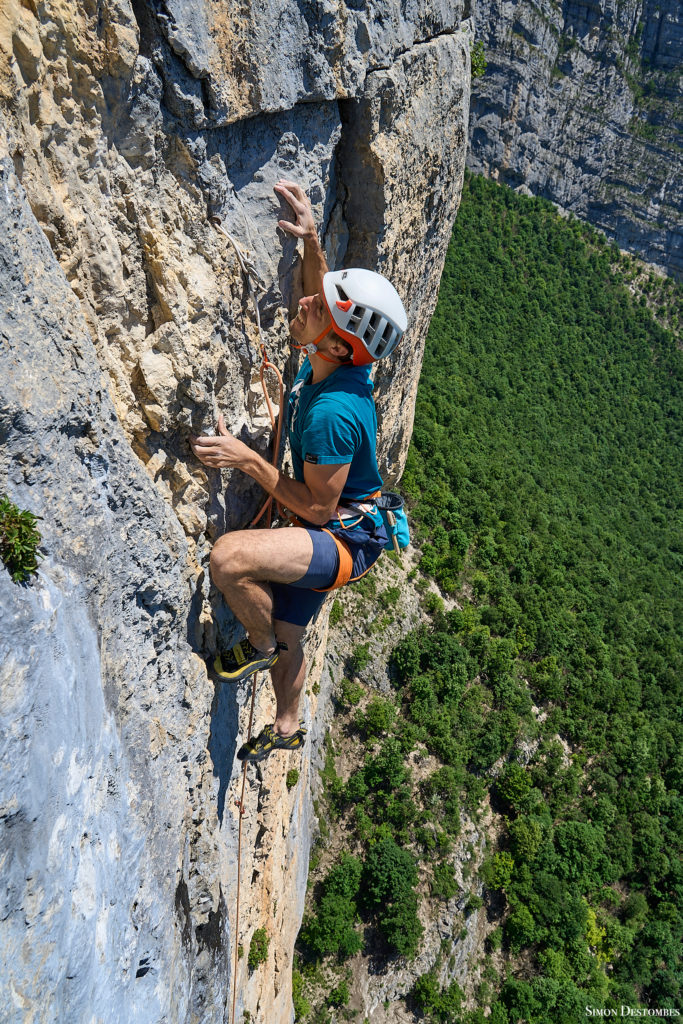
J’ai pratiqué la grande voie sur des voies déjà équipées, ou déjà parcourues en libre (« Free-rider » et « El Corazon » au Yosemite, « Yeah Man » et « Histoire sans fin » en Suisse, « Carnet d’adresse » au Rocher du Midi au-dessus de Grenoble, et d’autres plus faciles : « Babel », la Darbellay, « la Voie Petit », « Golden Tower » à vue, « Asproman »…). Mais se lancer dans l’inconnu offre tout un processus de découverte qui est particulièrement stimulant : se demander si ça va passer, découvrir les prises, les méthodes, vérifier si la voie peut être protégée, trouver les solutions. Les lignes d’artif existantes suivent souvent les faiblesses du rocher, mais à des endroits tout de même impressionnants, ce qui est prometteur ! Le petit plus de grimper en trad, c’est de se dire que ça passe (tant pour l’escalade que pour la protection) uniquement avec ce que le rocher nous propose. Les protections ajoutent une inconnue, une problématique supplémentaire à gérer.
Les lignes d’artif que nous avons libérées étaient relativement peu parcourues en artif, et donc peu altérées par le passage. Le rocher moyen, c’est aussi intéressant : au premier abord, tu ne sais jamais ce que ça va donner ! Avec un peu de nettoyage, des pieds qui cassent et des mains qui croustillent, il reste toujours quelque chose, et ça finit par se stabiliser ! C’est aussi stimulant, quand tu te dis au premier passage « si ça casse, ça ne passe plus… », et puis finalement, ça casse et tu trouves une autre méthode. Ça fait des ascenseurs émotionnels ! Et il y a bien cette phrase de Livanos : « Il n’y a pas de mauvais rocher, juste de mauvais grimpeurs. »
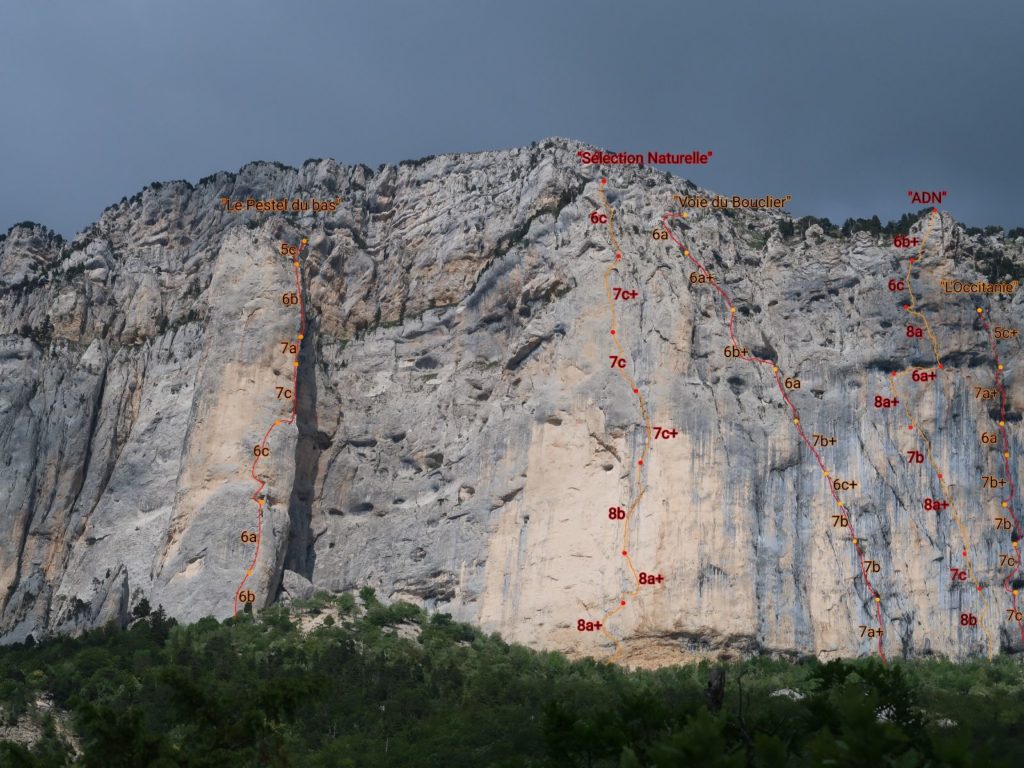
Quand une ligne de faiblesse évidente est libre on essaie d’ouvrir, comme à Glandasse avec « ADN ». Pour la voie « Sélection naturelle » à Glandasse aussi, on voulait ouvrir, mais on ne savait pas qu’il y avait déjà une voie. Ce n’est qu’en arrivant au premier relais, et en voyant un spit, que l’on s’est rendu compte que quelqu’un était passé avant nous ! En résumé, ce qui me stimule en grande voie, c’est le challenge physique, technique et psychologique, l’aventure, et la navigation dans l’incertitude pour y trouver des solutions. Et le Graal, c’est bien l’ouverture ! Je pense notamment à la voie « ADN » à Glandasse que nous avons ouverte avec Seb, c’était incroyable. Ou encore la voie que l’on ouverte avec Enzo Oddo aux Drus cet été, avec des difficultés moindres, mais quand tu trouves une ligne qui fonctionne, c’est génial, notamment là, avec une composante alpine sur une grande face !
Photos : Simon Destombes
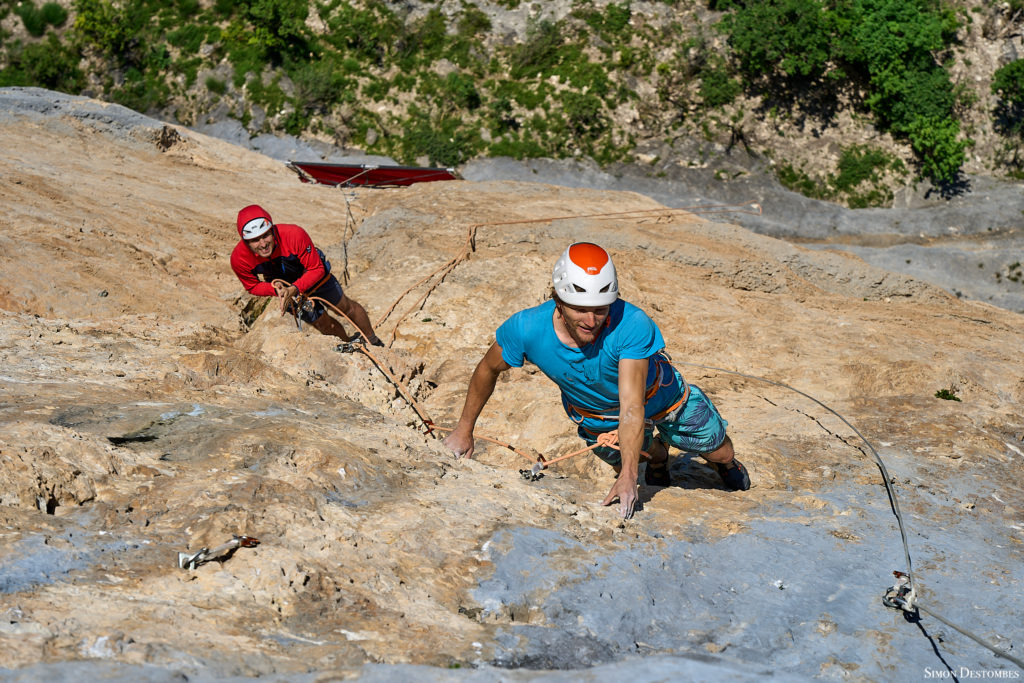
Léo Billon, French moutain guide and alpinist, member of the prestigious GMHM, likes to test himslef on challenging routes in the Mont-Blanc massif as much as he does discreet, extreme multi-ptich routes, as can be seen from his impressive list of sends under his belt, including “Freerider” at El Cap, “Yeah man” in Gastlosen and “Carnet d’adresse” at the Rocher du Midi…joined by Seb Ratel, another discreet but highly experienced mountain guide from Vercors, Léo free climbed at the beginning of summer the first aid route he did when he was 17, “Le renouvellement des mites”, proposed at 8b+, a route opened in 1999 by Bruno Arnaud and Marie-Claire Hourcade at Presles (A3/A4, 350m). A rather original initiative that caught our attention!
– How did you come up with the idea of free climb this aid route in Presles? Was the quality of the rock good enough?
Seb Ratel and I had already freed a few big aid routes on the Glandasse wall in the Diois region, and I remembered this big aid route that had impressed me at Presles. So we went to check: the rock was relatively good for free climbing, with a bit of cleaning to be done, but not too much. There are some very nice sections on water-drop limestone and some parts with more loose rock/yellow flakes.
– Can you describe the route? The key pitches, the main difficulties?
The key pitch is an 8b+ through a big pillar. 35 meters, 90 moves, 3 sections with a boulder crux around 7A/B, the start is athletic, then it’s long resistance climbing after a rest. It’s varied in yellow/orange rock with holes, crimps, twofingerpockets… A cool length to climb, it was at the limit of our ability. At first it was impressive, but in the end we realized it was doable. On the other hand, the route lacks homogeneity. There’s also an 8a and two 7c+ for 12 pitches, but if you do the 8b+, you’ll normally do the route.
– How are the protections? Not too exposed?
In the 6b L1, you can’t fall off! It’s exposed! The rest of the route is fairly well protected, with a few challenging sections. In the 8b+ it’s airy, with some obligatory sections where you can make big holes in the air if you fall! At the end of this pitch, you come out on 2 bird beaks, which isn’t very solid protections!
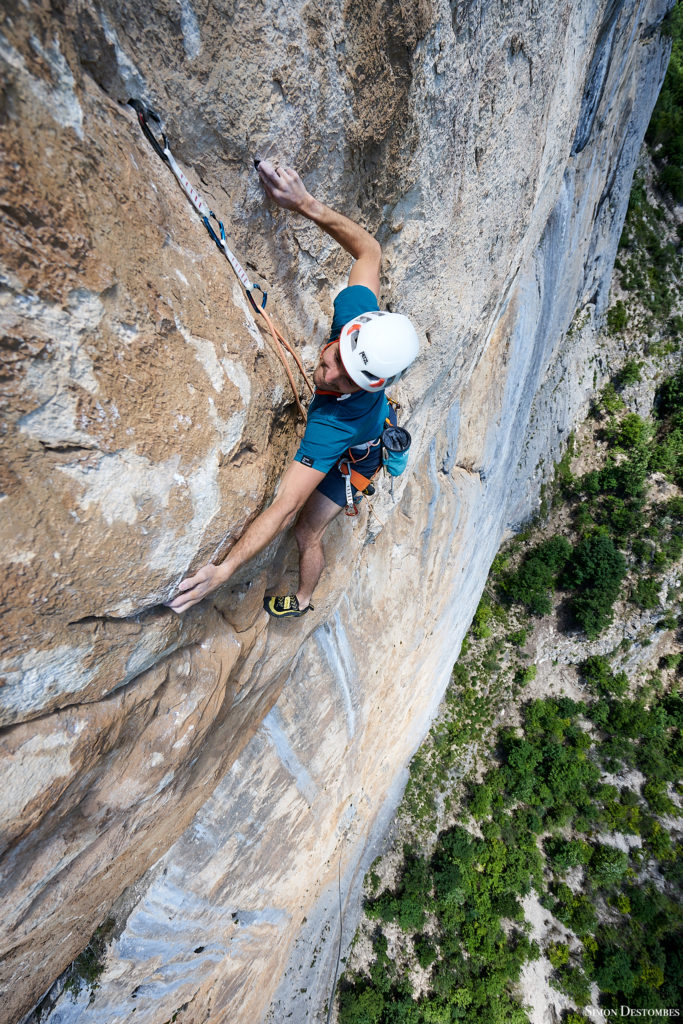
– How was the process?
As with the other aid routes we’d freed up, we went at it the first time using aid gear. We brushed a bit, laid out the pitch, put on protections and left the gear in place. After 2 days each cleaning the pitches, we tried out the moves on a static rope. I went back one more time, and then it was the sending day.
– What’s your motivation for free climbing aid routes where the rock couldn’t offer the best quality?
I like to try these kind of routes routes, because of the repetition of the difficulties. There’s constant management, little window for error (especially when you’re at the limit of your level!), and you have to climb well. You can’t afford to climb in a safe or controlled way. I love that feeling of being at my limit, where everything has to line up to allow free climbing. You have to climb well on every pitch, and that’s the demanding thing and challenge I like to find. Continuing to climb almost at your maximum level, with the day’s fatigue building up, while maintaining the right intention, the right state of mind, and managing the pressure, is what makes this practice stimulating.
I’ve practised multi-pitch routes that are already bolted, or that I’ve already climbed on my own (“Free-rider” and “El Corazon” in Yosemite, “Yeah Man” and “Histoire sans fin” in Switzerland, “Carnet d’adresse” at Rocher du Midi above Grenoble, and other easier routes: “Babel”, the Darbellay, “la Voie Petit”, “Golden Tower” on sight, “Asproman”…). But jumping into the unknown offers a whole process of discovery that is particularly stimulating: wondering if it will work, discovering holds, betas, checking if the route can be protected, finding solutions. Existing aid lines often follow the weaknesses of the rock, but in impressive places all the same, which is promising! The added bonus of trad climbing is the knowledge that you can only climb and protect with what the rock offers. Protection adds another unknown, another problem to manage.
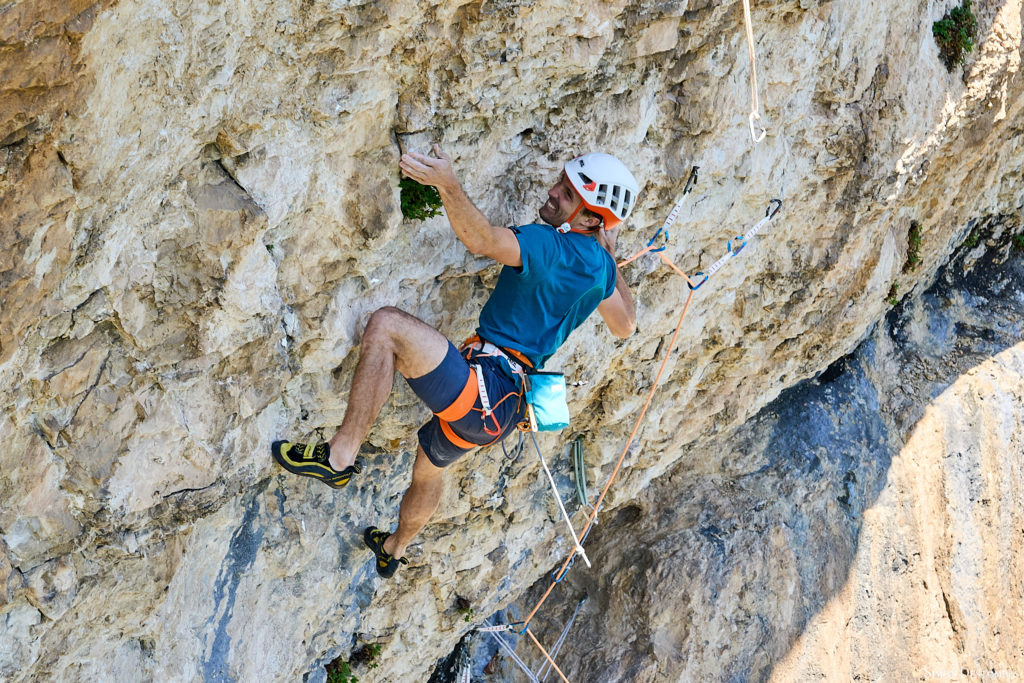
The aid lines we freed were relatively untouched by aid climbing, and therefore little altered by the previous climbers. Loose rock is also interesting: at first glance, you never know what it’s going to be like! With a bit of cleaning up, feet breaking and hands crunching, there’s always something left, and it eventually stabilizes! It’s also stimulating when you say to yourself on the first go “if it breaks, it would not be doable anymore…”, and then finally, it’s breaking and you find another beta. It’s an emotional elevator! And there’s something Livanos said: “There are no bad rocks, only bad climbers.”
When an obvious line of weakness is maybe doable in freeclimbing, we try to open it up, as we did in Glandasse with “ADN”. For the “Sélection naturelle” route at Glandasse too, we wanted to open up, but we didn’t know there was already a route there. It was only when we got to the first anchor and saw a bolt that we realized someone had gone before us! To sum up, what stimulates me in multi-pitch free climbing on aid routes is the physical, technical and psychological challenge, the adventure, and navigating uncertainty to find solutions. And the Holy Grail is opening up! I’m thinking in particular of the “ADN” route in Glandasse that Seb and I opened, which was incredible. Or the route we opened with Enzo Oddo at Les Drus this summer, with lower difficulties, but when you find a line that works, it’s great, especially there, with an alpine component on a big face!
Photos : Simon Destombes



